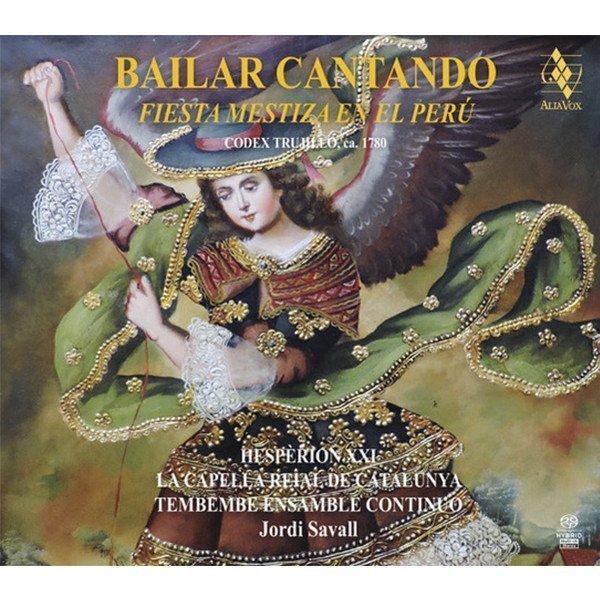BAILAR CANTANDO
Fiesta Mestiza en el Perú
Hespèrion XXI, Jordi Savall, La Capella Reial de Catalunya
17,99€
AVSA9927
The twenty pieces comprising the musical collection in the Codex Trujillo del Perú are an exceptional case in the history of the indigenous music of the New World. This collection of tonadas, cachuas, tonadillas, bayles, cachuytas and lanchas offers a glimpse of the repertory native to the traditions of the country, as indicated by the text of one of the cachuas sung “al uso de nuestra tierra” (“according to the customs of our land”) and in particular the songs and dances favoured by the popular classes who lived in the “Viceroyalty of Peru” at the end of the 18th century.
“No one listening to these sweetly elegant pieces would bother themselves with their historical context for long, so winning is their timeless South American spirit – a benign mixture of Spanish, Amerindian and African aesthetics … Savall’s orchestrations…sound just the part, as does the stylish singing, and although there isn’t any dancing it certainly isn’t hard to visualise some … it all sounds like a gently joyous occasion, like some long-remembered summer night under the stars. Irresistible.”
Lindsay Kemp – Gramophone, November 2018
DANCING AND SINGING
MESTIZO FESTIVITY IN PERU
Codex Trujillo, ca. 1780
The twenty pieces comprising the musical collection in the Codex Trujillo del Perú are an exceptional case in the history of the indigenous music of the New World. This collection of tonadas, cachuas, tonadillas, bayles, cachuytas and lanchas offers a glimpse of the repertory native to the traditions of the country, as indicated by the text of one of the cachuas sung “al uso de nuestra tierra” (“according to the customs of our land”) and in particular the songs and dances favoured by the popular classes who lived in the “Viceroyalty of Peru” at the end of the 18th century.
The vast majority of the songs are tonadas or chansons intended to be danced and sung (“para baylar cantando”), and although most of the texts are in Spanish, displaying the characteristic variants of Spanish as it was spoken by the native Indians, the collection also includes texts in Quechua and Mochica, which – like the music itself – show a clear relationship with the indigenous cultures of Indian and African origin. All these elements explain the highly distinctive style of these “native songs” which clearly sets them apart from the music of Spain and that of the New World. They have been handed down to us by composers of the same period who were active at court or in the major churches of the Viceroyalty of Peru.
+ information in the CD booklet
JORDI SAVALL
Washington/Durham (USA)
27/30 April 2018
Translated by Jacqueline Minett







Share